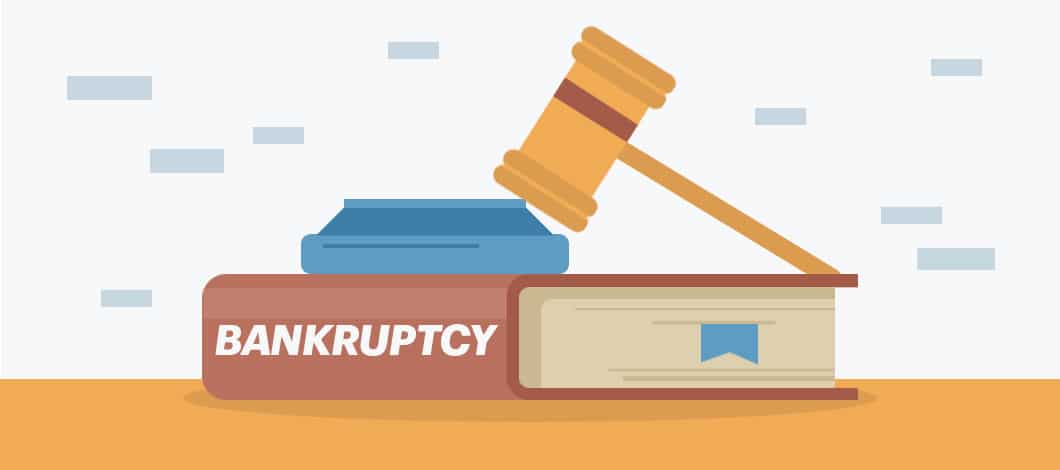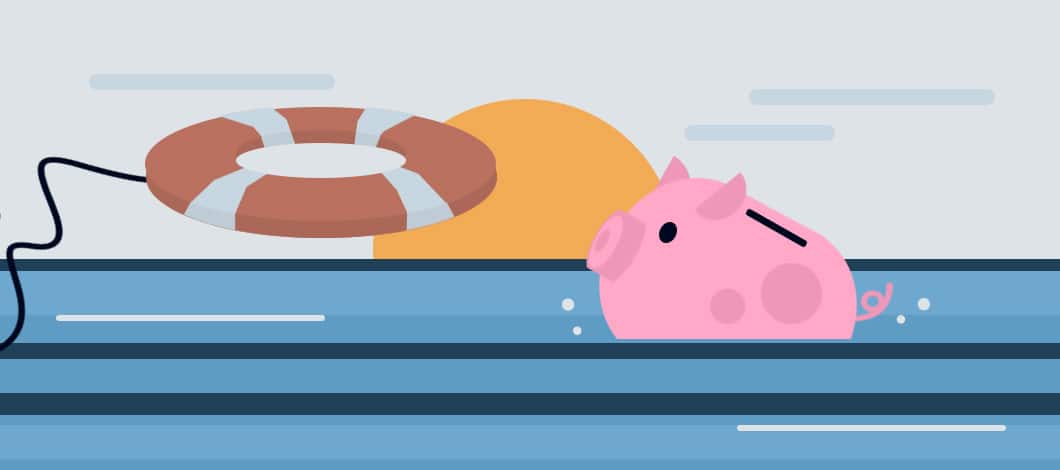Chapter 11 Subchapter V bankruptcy allows small business debtors to reorganize without ceasing operations.
Here’s how it works.
What Is Subchapter V of Chapter 11?
Chapter 11 Subchapter V (often referred to as “Subchapter 5”), a new section of Chapter 11 of the U.S. Bankruptcy Code, was added by the Small Business Reorganization Act (SBRA) of 2019.
The new bankruptcy laws established by this act make it easier for small business debtors to reorganize their operations to repay their debts without going out of business, an option previously inaccessible to smaller companies.
Subchapter V facilitates Chapter 11 reorganization by streamlining the process, making it less expensive, allowing debtors to retain equity without full debt repayment and making it easier to qualify for release from debt liability.
How Does Subchapter V Differ from Standard Chapter 11 Bankruptcy Protection?
Chapter 11, named after the chapter where it appears in the U.S. Bankruptcy Code, is one of the 3 most common types of bankruptcy filed by consumers and businesses:
- Chapter 7, which allows debtors to divide and sell assets (liquidation) to repay debts
- Chapter 11, which allows businesses to reorganize to restore profitability instead of liquidating
- Chapter 13, which allows individual consumers and sole proprietors to adjust debt obligations by making repayments on an installment plan
In a standard Chapter 11 filing, a business can avoid liquidation by submitting a plan to the bankruptcy court explaining how they can repay their debts while staying in business by taking steps such as downsizing operations and selling assets such as property and equipment. The plan is subject to review by the bankruptcy court and by the debtor’s creditors, who are allowed to vote on the proposal.
If the plan meets approval, some of the debtor’s obligations may be partially repaid under terms negotiated with creditors, while they may be released from paying other debt, known as having debt discharged.
While a standard Chapter 11 can help businesses stay open, the reorganization process tends to be complicated, long, expensive and potentially risky to debtors. Because of this, until recently, Chapter 11 has been mainly of benefit to large corporations which can afford the process and mitigate the risk.
The SBRA addition of Subchapter V took steps to expand the accessibility of Chapter 11 reorganization to smaller businesses. These measures include:
- Setting debt limit thresholds to designate small business debtors who qualify for expedited procedures
- Specifying that a Subchapter V bankruptcy petition can only be filed by debtors and not creditors
- Speeding up the approval process
- Allowing administrative payments normally due at the time of bankruptcy to be spread out over long-term installments in some situations to make them more affordable
- Requiring a trustee to be assigned oversight of every case, while eliminating normal quarterly trustee fees
- Eliminating the requirement for the automatic appointment of a committee of creditors, another potentially expensive item
- Allowing debtors to retain equity in their business and continue owning and managing it while paying off unsecured creditors
- Allowing debtors to modify terms of loans that used their personal residence as collateral
- Eliminating the requirement for debtors to file a disclosure statement summarizing their assets, liabilities and business affairs
- Giving bankruptcy judges discretion to approve repayment plans over creditor objections
These and other changes prescribed under Subchapter V have made Chapter 11 reorganization a more feasible option for smaller businesses.

How Does Small Business Chapter 11 Subchapter V Bankruptcy Work?
To initiate a Subchapter V reorganization, you must first file a petition with the bankruptcy court that has jurisdiction over the area where your business is based. The court will assign a trustee to oversee your case and facilitate the development of a reorganization plan acceptable to you and your creditors. The trustee is entitled to a fee for their services, and your plan should include provisions for paying your trustee.
Within 90 days of filing, you must submit a plan explaining how you intend to reorganize your operations to repay your creditors within 3 years, or up to 5 years if an extension is set by the court. Your plan must estimate how much disposable income you will have to put toward debt repayments during this time, which will help calculate your installment amounts. In conjunction with your plan, you must submit supporting documentation such as a balance sheet, a profit-and-loss statement (statement of operations), cash-flow statements and federal tax returns.
The court, with input from your creditors, will review your plan. The review process includes meeting with your trustee, being interviewed by your creditors and attending a conference with a judge. You can have an attorney represent you during this process, which is advisable.
If your plan is approved, you will be allowed to continue running your business while you repay your creditors under the terms agreed upon. If your creditors approve of your plan, in which case your plan is considered a “consensual plan,” you will be discharged from some of your debt liability under the negotiated terms at the time your plan is approved by the court. If your creditors don’t approve but the court does, in which case your plan is considered a “cramdown plan,” your debt won’t be discharged until you complete your installment payments. Should you default on your payments, your creditors will have recourse under the terms agreed upon in your plan.
Who Qualifies for Subchapter V Bankruptcy?
Qualifying for 11 bankruptcy under Chapter 11 Subchapter V requires you to meet the debt threshold to qualify as a small business debtor. Normally, this threshold is set at $2,725,625 in secured and unsecured non-contingent and liquidated debt, subject to periodic adjustment. However, it was raised temporarily to $7,500,000 under the Coronavirus Aid, Relief, and Economic Security (CARES) Act. At least half of this debt must come from business activity.
Qualifying also requires approval of your reorganizational plan. Approval lies with the court and can be influenced by input from your creditors. If your creditors have no objections to your plan, the court will be inclined to approve it. If your creditors do voice objections, the court may consider issues such as:
- Is your proposed repayment schedule feasible based on your financial planning and revenue estimates?
- Does your plan protect the best interests of your creditors by repaying them at least as much as they would get if your business were liquidated under Chapter 7?
- Is your plan fair and equitable to your creditors, providing secured creditors (creditors who have liens) with a minimum of compensation equal to collateral they are owed and not claiming equity for yourself until you repay your debts?
- Was your plan proposed in good faith without a questionable motive, such as avoiding payments you could actually afford?
After evaluating these types of considerations, the court will decide whether to approve your proposal. While the court will consider input from your creditors, it has the discretion to override creditor objections and approve your plan anyway, provided it meets allowed criteria. In general, the court will approve a plan if it demonstrates your ability to make repayments on the schedule proposed and if it provides remedies to your creditors should you fail to meet your payment obligations.

When Is Chapter 11 Subchapter V Bankruptcy a Good Option?
A Chapter 11 Subchapter V reorganization can be a useful option if you think you could restore your business to profitability and repay your debts over the next 3 to 5 years if your creditors were willing to negotiate, but they’re unwilling. The court has the option of overriding creditor objections under Subchapter V.
If your financial projections don’t show you being able to restore profitability and repay your debts even after a reorganization, you might consider whether you’d be better off filing for a Chapter 7 liquidation. On the other hand, if you think you could repay your debts without a reorganization if you had an installment agreement, you might consider filing for a Chapter 13 adjustment.
There are other measures short of bankruptcy you might pursue, too. In some states, a third-party custodian called a receiver can be appointed by the state to mediate a solution between debtors and creditors. This solution, known as receivership, is usually quicker and less costly than undergoing a bankruptcy process.
Another option is seeking business financing to help you cover your debts until you can transition to a more profitable reorganization. For instance, you may qualify for a Small Business Administration (SBA) loan. An experienced financial adviser or bankruptcy attorney can help you work through your options.
How Do You Apply for Subchapter V Bankruptcy?
Applying for a Chapter 11 Subchapter V reorganization is a 4-step process:
- Decide whether Subchapter V is a viable option for you
- File a bankruptcy petition in the jurisdiction where your business is based
- File your bankruptcy forms and paperwork
- Seek reorganizational plan approval
To decide whether Subchapter V is an option for you, you will need to determine if you meet the qualifying debt threshold. You should also consider whether a reorganization is a better solution for you than other options such as liquidation or financing.
If you decide to go with Subchapter V, you must file a petition in the jurisdiction where your business is organized or where you have your principal place of business or place of assets. You can file a petition by using a Form B 101 (Voluntary Petition for Individuals Filing for Bankruptcy), provided on the website for the U.S. Courts along with other bankruptcy forms. The U.S. Courts site also provides a directory of U.S. District and Bankruptcy Courts.
You must also file the appropriate forms. These consist of filings providing information about your finances such as:
- Lists of creditors
- Your assets and liabilities
- Your balance sheet
- Your profit and loss statement
- Your cash-flow statement
- Your tax information
Finally, you must obtain approval for your reorganizational plan. This will involve interviews with trustees, meetings with creditors, attending a conference with a judge known as a status conference, submitting a plan and possibly adjusting your plan.
Because a Chapter 11 organization is a complex process which can affect your long-term finances, hiring an experienced bankruptcy attorney and a qualified financial consultant is advisable.
Is Subchapter V Right for You?
If your small business is struggling with debt but you think a reorganization could restore you to profitability, filing for Chapter 11 Subchapter V might help you get your finances back on track.
However, depending on your situation, you may also have other options. One option is applying for a business loan, line of credit or other form of small business financing to increase your cash flow until you can catch up on your debts.
If you’d like to explore whether financing might help you avoid having to file for bankruptcy, take a few minutes to fill out our free no-obligation application and see which types of financing you may prequalify for.










